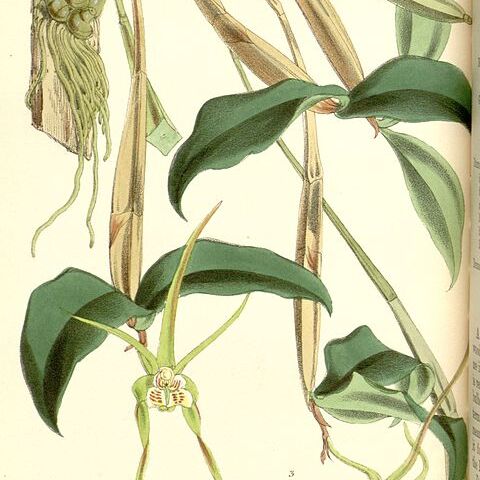Pseudobulbs pendulous, 300–600 × 6–9 mm, 4-sided. Leaves 2–5, 50–90 × 20–40 mm, dark green. Racemes 10–35 mm long, 1–4-flowered. Flowers 70–120 × 60–80 mm, greenish yellow with prominent red blotches, labellum white with red or purplish lines. Dorsal sepal 40–70 × 3–5 mm. Lateral sepals 30–70 × 7–10 mm. Petals 25–40 × 1.5–2 mm. Labellum 11–15 × 17–20 mm; lateral lobes erect; midlobe narrow, shortly hairy, sharply pointed, with 3 prominent parallel ridges.
Pseudobulbs pendulous, 300–500 × 6–9 mm, 4-sided. Leaves 2–5, 50–90 × 15–25 mm, dark green. Racemes 10–35 mm long, 1–4-flowered. Flowers 60–80 × 40–60 mm, greenish yellow to pale yellow, occasionally with few small spots and blotches. Dorsal sepal 30–70 × 3–5 mm. Lateral sepals 30–70 × 6–8 mm. Petals 22–25 × 1 mm. Labellum 11–15 × 6–10 mm, white; lateral lobes erect; midlobe narrow, shortly hairy, pointed, with 3 low parallel ridges.

